 |
||
|
||
| ||
So, desktop processors have stepped over a 2 GHz level and it's time that we knock together their fastest models. It's quite a complicated problem to choose a testing technique and conditions. How should we ascertain a leader? Well, there are standard tests. SPEC CPU, for example. You think it's too artificial? Well, we can use another popular test - SYSmark which use businness synthetic applications. You think it isn't an ideal choice either? Well, synthetic tests can serve as a standard, but their results do not correlate much with a speed of accomplishment of certain operations on a computer of a certain user. Although real (not synthetic) examples are used there, they certainly differ among users in operations, resolutions, codecs and data. Besides, a speed of a system depends on a processors, as well as on a chipset, a mainboard, a type and speed of memory, a video card and a hard drive. A character of operation with all these components depends on an application. Plus, importance of one or another test depends on a user. Besides, it is possible that in the same application one platform beats another (with the same processor)... So, now when we have clarified the problems let's see what we can do about it. Our readers know quite well what test suite we use for such comparisons. It includes both synthetic and real tests with all possible parameters. We decided to use all chipsets which pretend to take the crown at least in one test. Thankfully, nobody makes platforms optimized for a certain test with falling behind in the rest, that is why a lag of any chipset from the leading one will be considered as unrealized potential. Besides, we took the fastest mainboards in their families. In closing, take a look at parameters of all used chipsets and at unknown NVIDIA nForce 415-D in the summary table of the chipsets for modern processors. There you can also compare a speed of operation with memory. Test conditionsTestbed:
Software:
In the diagrams we left only the best results of each processor in each test. The performance of the chipsets can be estimated by the graphic pictures or you can see in the summary table. In our humble opinion, the chipsets are divided into two groups on the diagrams, according to the processors. At last, the today's roundup can't reveal new advantages and disadvantages of the processors' architectures. Half a year ago we published a review where we analyzed the Intel Pentium 4 architecture in comparison with the AMD Athlon and forecasted development of the current generation of these processors. The conclusions we made there are still correct, and today we suggest that you check what you learned there using a small test. Test results
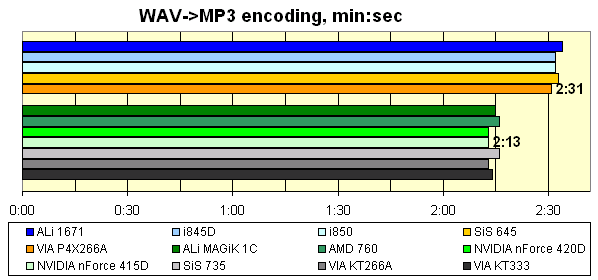 The Athlon XP easily wins.
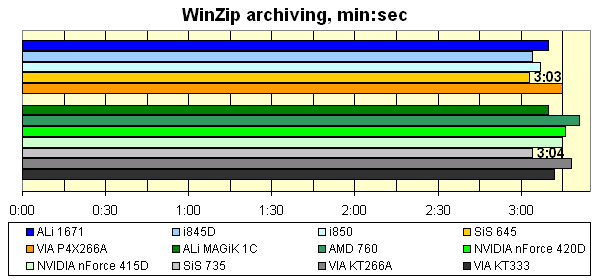 Does the 1sec gap matter? Well, here we have a draw.
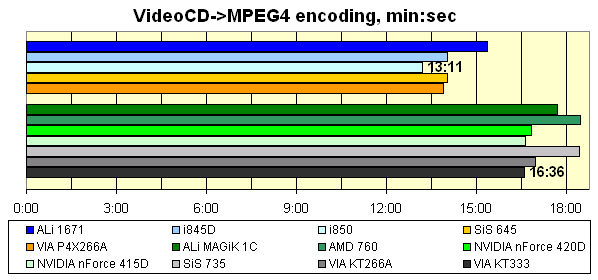 Do you remember the results in this test until the codec was optimized for the SSE2? Is that normal to get a gain a year later after the processor is released? The Pentium 4 smashes its competitor to pieces.
 Well, if we estimate the difference percentage-wise, will it be convincing? The Athlon XP leads.
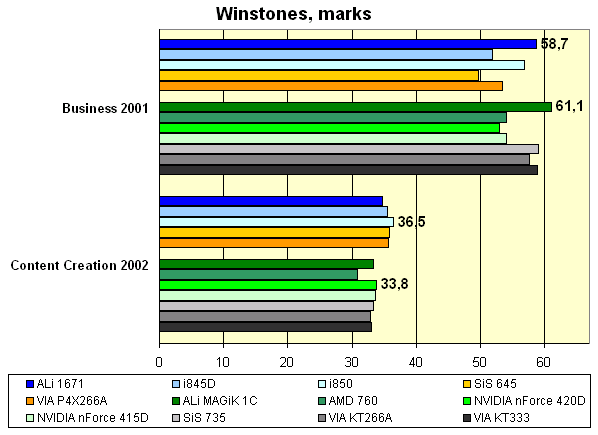 Aren't the results of the Business test strange? Again a draw.
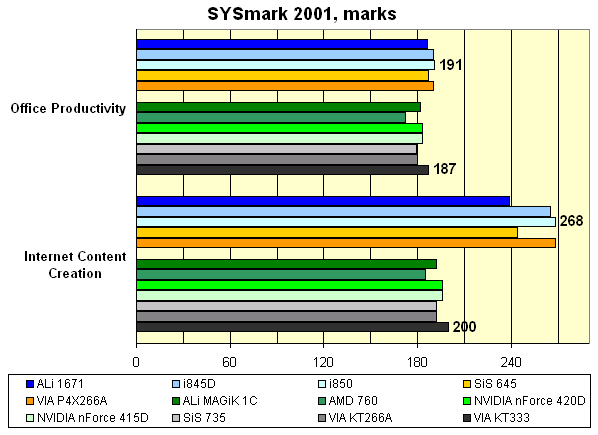 What caused such a bad lag of the Athlon XP in the Internet Content Creation test if we know that the WME 7.0 included in the applications of this test can't define a support of the SSE instructions for the Athlon XP?
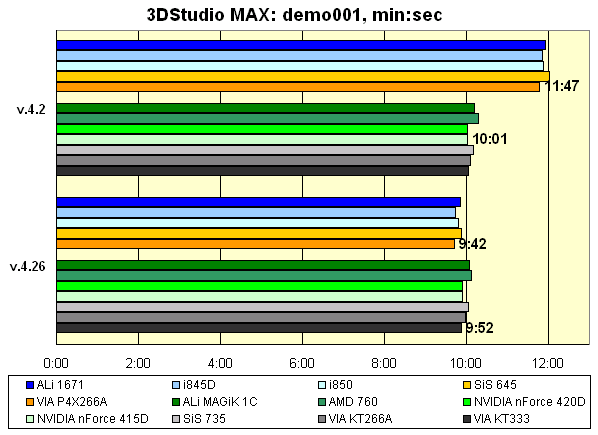 What caused such a noticeable lag of the Pentium 4 in the v.4.2 and equal results in v.4.26 if we know that v.4.26 is rewritten to support SSE2 instructions? Here we have no winners.
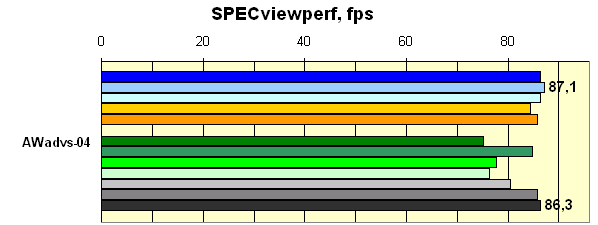 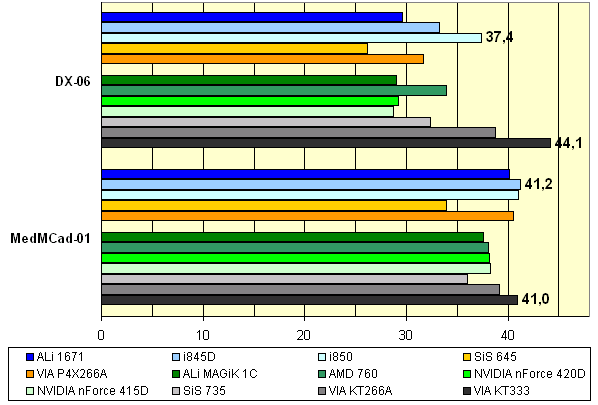 Can we call it a victory of one of the competitors if in 5 of 6 tests the the results were almost equal with the Pentium 4 being a bit better and in the last one the Athlon XP took a big step forward? I think it's a draw.
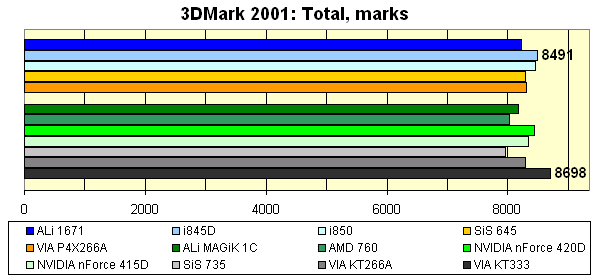
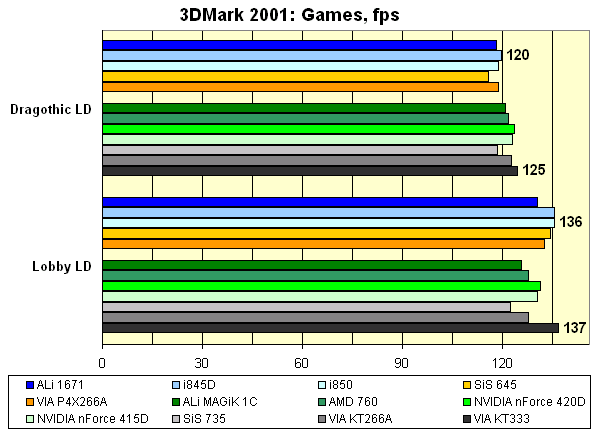 Can we generalize the results of the most popular test to all games if the results in real games do not coincide with them? The Athlon XP scores better results.
 How do you call such a situation when the Pentium 4 always wins in the Quake III? Can we say that the game is optimized for the processor? Or vice versa? The Pentium 4 leads.
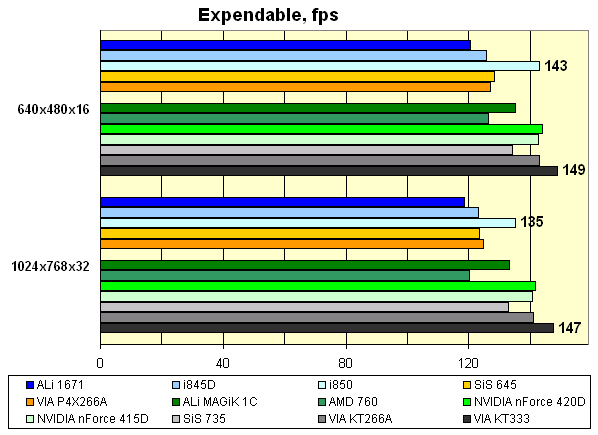 Can we generalize the results of such an ancient game to any other applications? Should we take into consideration these results when making the resume? The Athlon XP leads.
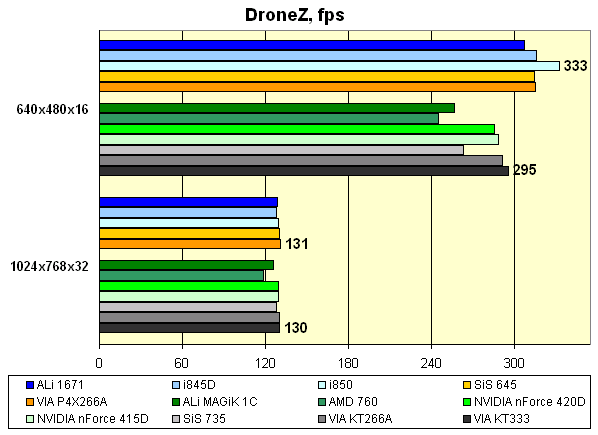 Is the result difference important in 640x480 if in 1024x768 it disappears and there are not many people out there who play in in such low resolutions? The Pentium 4 takes a lead. ConclusionThe Pentium 4 is a cool processor. It wins in the very popular Quake III, as well as in DroneZ which is considered a sample of a modern game. Besides, it performs better in movie playback with the DivX codec. Well, the performance of the Intel's processor in the entertaining sphere is very high. The Athlon XP shows a decent performance at a lower
frequency and price. It outscores the other in some tests (WinAce,
MP3 encoding (with the Lame codec)). Applications which do not have
the SSE2 support will probably work faster on the Athlon XP - just
take the DivX and 3DStudio MAX.
Write a comment below. No registration needed!
|
| |||||||||||||||||||||||||||||||||||||||||||||||||||||||||||||||||||||||||||||||||||||||||||||||||||||||||||||||||||||||||||||||||||||||||||||||||||||||||||||||||||||||||||||||||||||||||||||||||||||||||||||||||||||||||||||||||||||||||||||||||||||||||||
Platform · Video · Multimedia · Mobile · Other || About us & Privacy policy · Twitter · Facebook
Copyright © Byrds Research & Publishing, Ltd., 1997–2011. All rights reserved.